Shopify B2B: Your Next Growth Opportunity?

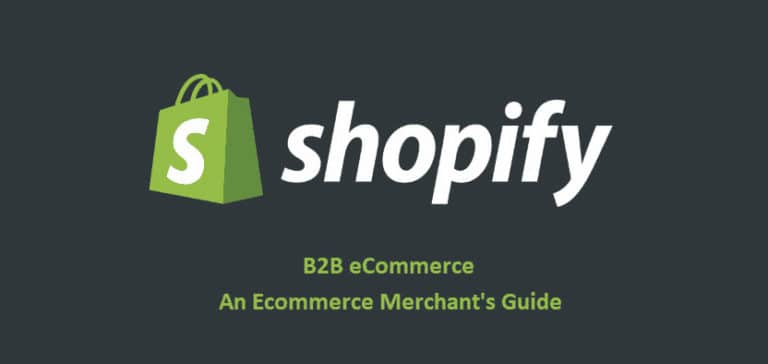
In this article
On June 21st, Shopify launched a brand-new service: B2B on Shopify. For over 15 years, Shopify has been synonymous with Direct-to-Consumer (DTC) ecommerce. Now, they see their next great growth frontier in the promise of B2B ecommerce.
When you ask the average American about ecommerce, their mind probably jumps first to Amazon Prime and their ability to get anything they want delivered to their front door. Little do they know, business-to-business shopping is already much more digitized than retail shopping!
According to Statista, 14.2% of retail sales happened online in 2021, and they expect that number to rise quickly to 21.9% in 2025. In contrast, Gartner expects that a whopping 80% of B2B sales interactions will happen on digital channels by that same date.
With numbers like those, it’s no surprise that Shopify is looking to muscle into B2B ecommerce.
In this article, we’ll cover the basis of B2B on Shopify, share our thoughts on how it will affect the broader ecommerce industry, and give a few tips on what you can do to take advantage of this new offering.
What is B2B on Shopify?
Per Shopify’s press release, B2B on Shopify is “a new set of features built specifically for B2B merchants, directly into our platform, and with access to all of Shopify’s most powerful customization features like store themes, discounts, and Functions—and it’s all included with Shopify Plus. This will allow you to manage your entire ecommerce business—whether it’s B2B, DTC, or both—all in one place.”
Business-to-business sales are significantly different from direct-to-consumer sales, so it’s only natural that Shopify needs to launch an entirely new service with a full suite of features to enable B2B ecommerce on its platform.
Shopify B2B Company Profiles
First and foremost, different business purchasers require different experiences. Almost all DTC online stores offer their customers the same experience: they see the same homepage, the same products, and the same prices. At most, customization comes down to whether the user can log into a saved profile.
In contrast, B2B purchasers need different experiences from one another. Some businesses will negotiate better prices and terms than others, so of course a seller doesn’t want the businesses paying more to see that others are paying less. Adding to that, businesses may have multiple purchasers that are in charge of procuring different items, so they need the ability to add different people to an account with varying levels of permissions.
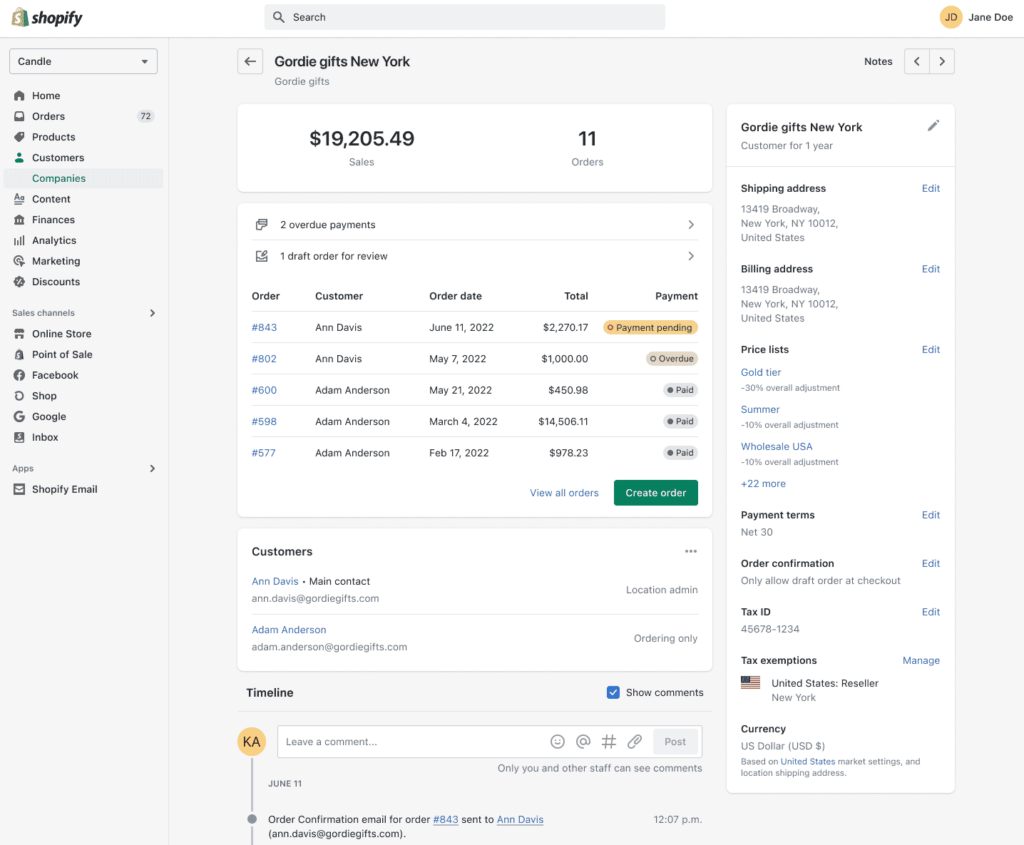
Source: Shopify.com
B2B on Shopify will enable its merchants to create company profiles that save all of this differentiation and more. With it, they overcome one of the biggest hurdles involved in moving from DTC to B2B ecommerce.
B2B Price Lists
Building on the above, prices for business-to-business commerce are multiple degrees more complex than prices for direct-to-consumer sales.
B2B on Shopify will enable merchants to create variable price lists for all of their products and product variants, and it will also enable easy currency modifications. In this way, sellers will be able to manage complex international B2B ecommerce smoothly.
B2B Payment Terms
Business-to-business transactions are resolved with up-front payments much less frequently than DTC transactions, so a feature for payment terms is absolutely essential. In addition to assigning different payment terms to different merchants, B2B on Shopify also will help its users track, sort, and collect on payments as they become due.
On the other side of the transaction, businesses will be able to see their payment terms, check out with their approved terms, and keep track of upcoming payments within their company profile.
Shopify will also provide a personal checkout experience for business purchasers pre-loaded with assigned payment terms, payment methods, and wholesale discounts. The B2B Checkout feature thus will seek to help streamline conversion and keep customers happily ordering
Why is Shopify Targeting B2B Ecommerce?
In their announcement, Shopify exhorts its users, “With an expected global market value of $7.7 trillion, now is the time to expand into wholesale.” Their logic for why their users should wholesale also succinctly explains why they’re launching B2B on Shopify: there’s a ton of money to be won!
Ecommerce merchants are used to hearing the advice that they should sell to consumers on multiple channels, and many now are pursuing multi-channel growth strategies across their DTC sites and online marketplaces. Shopify is betting that the next big growth frontier won’t be DTC at all; instead, ecommerce DTC brands are going to start trying to win shelf space in physical retail.
Shopify may be feeling the need to take some big swings as the walls of DTC ecommerce seem to be tightening.
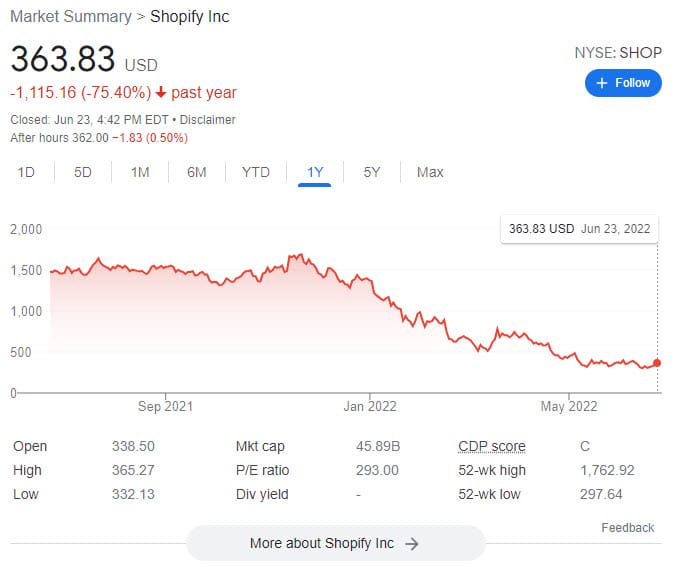
Source: Google.com
After a meteoric rise from $138 per share at the start of 2019 to $1,690 near the end of 2021, Shopify’s share price has crashed back to earth. Once tagged as the upstarts that would wrest control of ecommerce away from Amazon, they simply aren’t seeing the GMV growth that you’d expect from a giant slayer.
Moreover, Amazon is now the prime mover in the Shopify vs Amazon battle. Their new purchasing and fulfillment service, Amazon Buy with Prime, is a scary shot across Shopify’s bow. In short, Buy with Prime will allow DTC ecommerce brands to install the Prime buying and delivery process on their own website, thus offering fast and free shipping to their customers. If Shopify doesn’t allow its merchants to integrate with Buy with Prime, they’ll be at a disadvantage to all those that can use the service. If Shopify does allow the service, though, they’ll give up control of payments to Amazon. This would be devastating, as they rely on growth from merchant services like their payments solutions to drive their bottom line.
So, with DTC ecommerce only becoming more competitive, more saturated, and more difficult to win, Shopify is betting that by opening a new front with B2B ecommerce, they’ll go where others can’t and quickly grab market share.
How Can B2C Sellers Add B2B?
Shopify exhorts its users to add B2B to their growth strategy – if only it were that simple! Business-to-business sales are a completely different ballgame from direct-to-consumer. We won’t be able to teach you how to add a fundamentally different sales channel in the space of a few paragraphs, but we can at least share the basics.
First, what’s similar: you’ve learned to tell your brand’s story to win consumers, and you’ll need to do the same with business purchasers. Everyone loves a good story and a compelling brand, and it will help you stick in the mind of prospects. Moreover, a great story will help the retailer sell your product once it’s on shelves, so they need to know that your product will sell.
Next, start local. Consumers like to buy local, so retailers like to stock local products. Go door to door with samples, and talk to your local small business owners! You can connect with them as a fellow small business owner, and if your product is good, they’ll be able to find a place for it as the next best thing to come out of your town.
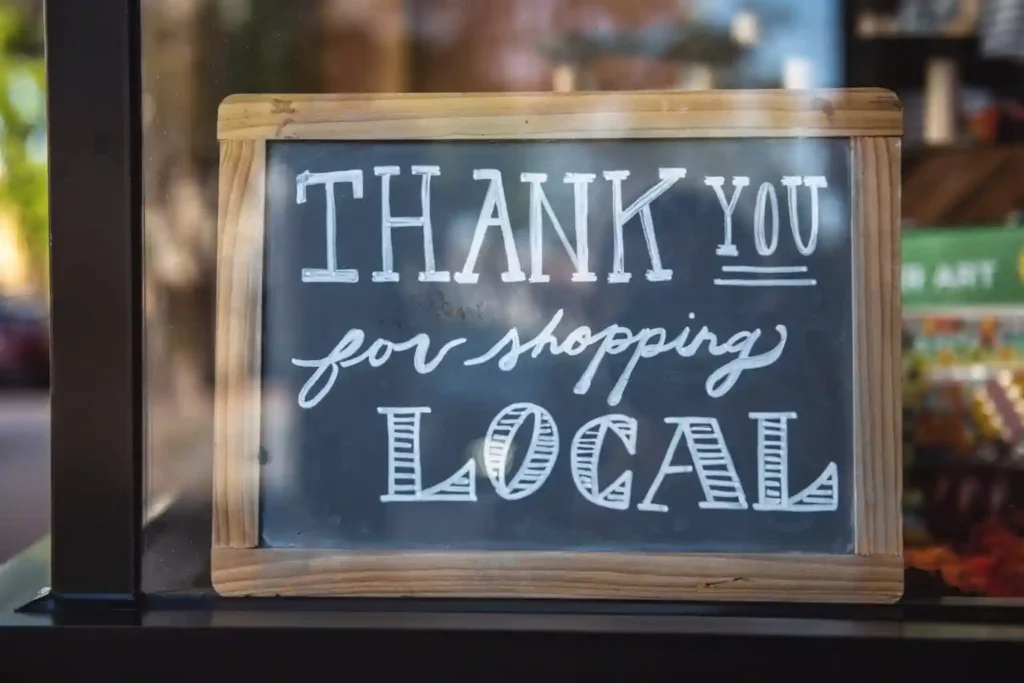
Once you’ve got your foot in the door and a little track record of success in business-to-business wholesaling, you can think bigger. Trade shows are a fantastic place to meet tons of retailers at once (including big regional and national ones) and to get your product into as many hands as possible. This is just the start of your sales journey, though, and where things really start to diverge from DTC ecommerce.
You’ll have to learn to love the long sales cycle: wholesale deals don’t happen overnight (or even over a month, or a year!). Retailers rarely have shelf space just lying around, waiting for someone to fill – so you have to develop relationships with them and either convince them to knock off a different product, or be ready to snap up an opening. We won’t try to teach you business-to-business sales here, but suffice to say that you’ll need to learn about how to build long-term relationships with potential buyers and to speak to their needs.
Finally, you need the right tools! This is where not only B2B on Shopify comes in, but also a whole host of other tools that make B2B hum. For instance, you’ll likely need a Customer Relationship Management (CRM) tool to manage long sales cycles with retailers. And you’ll need a fundamentally different Shopify fulfillment strategy that sends infrequent, large shipments to repeat customers instead of small orders all over.
Shopify B2B Fulfillment: Cahoot
Whether you’re just thinking about starting up B2B sales, or you’re an old pro who’s going to take advantage of Shopify’s new platform, you need a Shopify 3PL like Cahoot that has the flexibility to optimize for both DTC ecommerce and B2B replenishment.
Cahoot has created a robust ecommerce order fulfillment network that makes low cost, fast and free shipping a breeze for every eCommerce sales channel. We have built a dense network of dozens of locations that specialize in different aspects of fulfillment, so we provide affordable fast DTC shipping as easily as we can optimize low-cost, efficient replenishment for B2B.
Instead of having to contract with different 3PLs for your DTC and B2B orders, you can consolidate your inventory and your operations with us. You’ll enjoy economies of scale from being able to run leaner on inventory, and you’ll save employee time and headaches from not having to manage multiple providers. You can read or watch our case studies to see just how powerful consolidated operations for multi-channel ecommerce sales can be for your growth.
Contact Cahoot today to learn how we can design a custom fulfillment solution to power your profitable online growth, no matter the channel.
Offer 1-day and 2-day shipping at ground rates or less.
Related Blog Posts
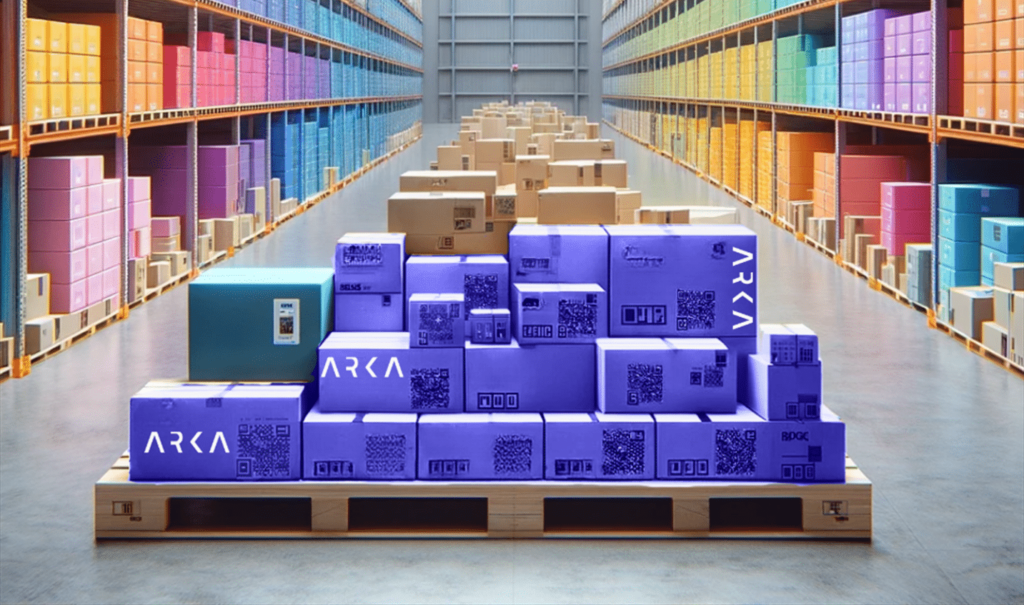
Packaging Design That Will Make Fulfillment Easy and Cut Costs
E-commerce Revolution with Strategic Packaging Solutions Like anyone in the e-commerce world, small business owners are always looking for ways to streamline their operations
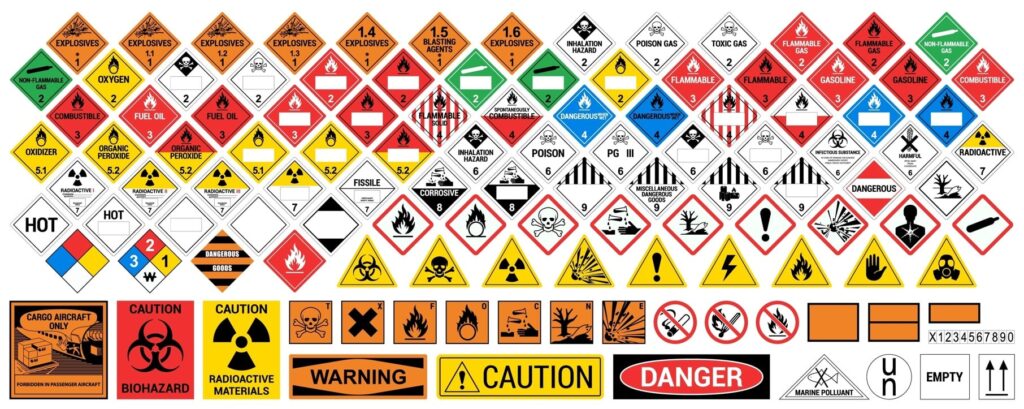
USPS Hazmat Shipping Guidelines – How to Ship Fast While Staying Compliant
Hazardous Materials What is a Hazardous Material? What Items Are HAZMAT? Classes of HAZMAT Items What Classes Can Ship on Various USPS Services?
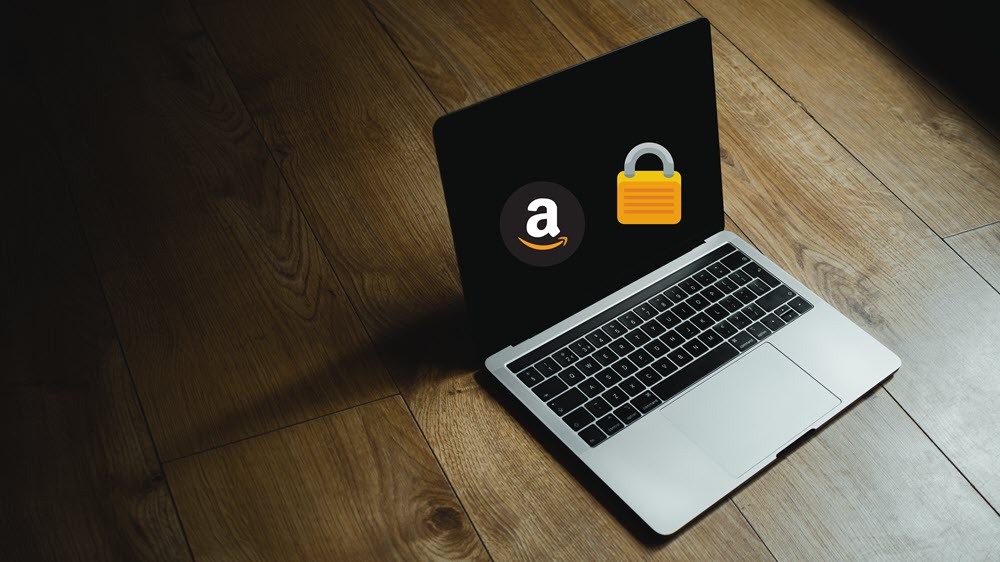
Protect Your Amazon Listings from Search Suppression, Hijackers, and Stockouts
Amazon is a competitive platform. You need to have a quality product, excellent listing content, and plenty of reviews to catch the attention of busy consumers
